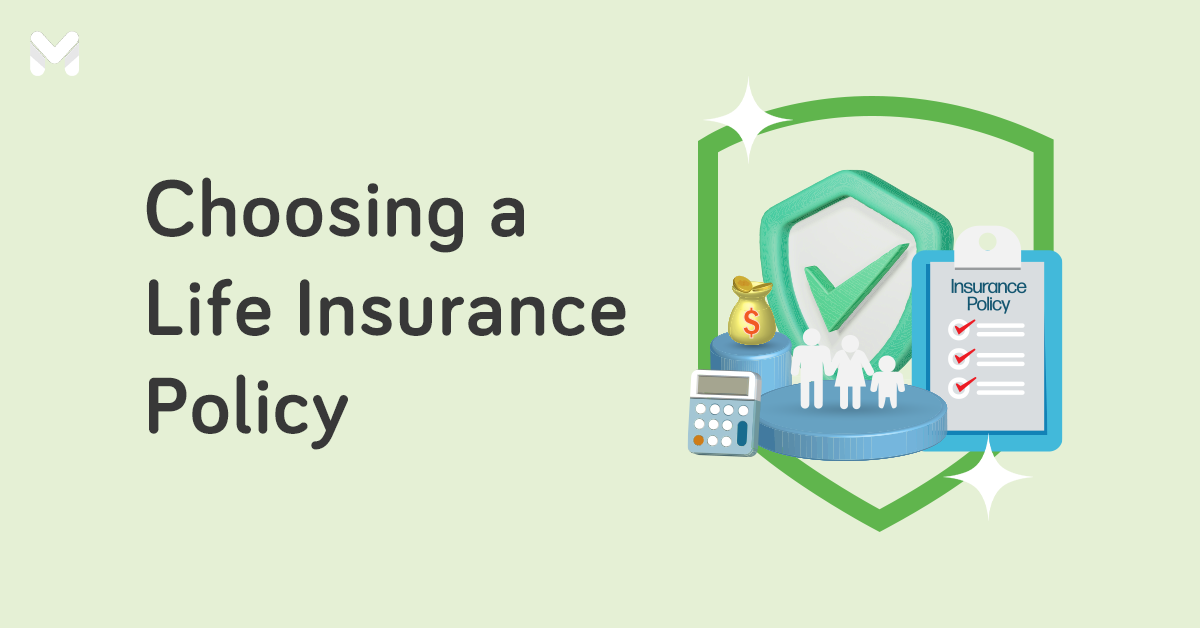If you have dependents and long-term financial goals, you’ve probably asked yourself, “How much life insurance do I need?”
Many factors play a role in figuring out the coverage you need. There are also several ways to calculate your recommended life insurance coverage.
In this article, learn about these factors and methods. This way, when calculating your life insurance coverage, you can leave enough for your loved ones in the event of your death.
Why You Should Determine Your Life Insurance Coverage
Life insurance is money your loved ones can use after you pass away. With that in mind, you want to ensure that this money will last them for a long time and help them pay for significant expenses such as college tuition, home mortgage, car payments, and more.
As much as possible, you don’t want to leave any gaps in your life insurance coverage. The last thing you want is for your loved ones to grieve your loss while struggling financially.
The right amount of life insurance coverage will not only help them make ends meet but also allow them to maintain their standard of living and help them achieve their long-term goals.
Related: Do You Really Need Life Insurance? Yes—Here's Why
What to Consider When Calculating How Much Life Insurance Coverage You Need
-Jun-14-2024-06-46-29-4811-AM.png?width=600&height=400&name=Pics%20for%20blog%20-%20600x400%20(24)-Jun-14-2024-06-46-29-4811-AM.png)
These contributing factors can help you determine the coverage you need:
- Your age and the age of your dependents - Consider how many years you want to provide financial support to your dependents. Your age also plays a significant factor since insurance premiums increase as a person ages.
- Current income - How much are you earning to financially support your dependents? This is also a crucial determining factor.
- Child care costs - Don’t forget to factor in child care costs if you have young kids. The surviving parent will need financial help to raise your children.
- Cost of living - Your life insurance coverage should be enough to maintain your loved ones’ standard of living, even if you’re no longer around.
- Savings and assets - If you have enough savings and accumulated assets to cover your dependents' needs for a specific period, you may not need as much life insurance coverage, nor will you need an increase in coverage.
- Debts - Your debts remain when you pass away. They can even become your estate’s responsibility or be deducted from the death benefit.
- Life insurance riders - Riders allow you to customize your life insurance protection. This will affect the total cost of your insurance policy.
- Type of coverage - There are different types of life insurance coverage, so you’ll need to decide whether to get a term life policy, which is more affordable; or a permanent life policy, whose coverage does not expire and has a cash value component.
Read more: Should You Get Life Insurance? Consider These 8 Factors
How Much Life Insurance Do I Need: 3 Ways to Calculate Your Coverage Amount
-Jun-14-2024-06-48-21-0896-AM.png?width=600&height=400&name=Pics%20for%20blog%20-%20600x400%20(25)-Jun-14-2024-06-48-21-0896-AM.png)
While you can’t foresee all the expenses your loved ones might face when you’re no longer around, there are some calculation models and straightforward ways to calculate life insurance coverage:
📌 Multiply Your Income by 10 (+ College Expenses for Each Child)
While this approach is the most basic, it’s still helpful with insurance planning and preparing for your children’s college education. Just multiply your current income by 10 and add an estimate of each child’s college expenses (tuition and miscellaneous expenses).
Pros: It’s pretty straightforward. It also provides an extra cushion for your children’s college education.
Cons: This does not include future inflations and other expenses that may arise beyond what you calculated.
📌 Human-Life Value Approach
Also known as the standard of living method, the human-life value approach calculates the life insurance amount your family would need based on the financial losses they would bear if you were to pass away today.[1] It uses estimates of your future financial contributions and factors such as your income, age, and number of dependents.
- Estimate your average annual salary and potential future increases.
- Subtract an estimate of income taxes and living expenses to get the salary needed for your family’s needs.
- Determine the length of time your earnings will need to be replaced. This could be until your dependents no longer need financial support or until your retirement age.
- Multiply the net salary needed by the time needed to determine the future earnings.
- Once you have estimated your human life value, you can multiply the amount by a factor of 10 to 12.
Pros: It’s more accurate than going by a rule of thumb. It’s also relatively easy to understand the concept of replacing and maintaining the insured’s income.
Cons: It’s not an accurate estimate of your family’s life insurance needs. It may overstate their insurance needs since it doesn’t account for other family assets and sources of income.
📌 Debt, Income, Mortgage, Education (DIME) Method
DIME is an acronym for Debt, Income, Mortgage, and Education expenses. To use this method, add the expenses in each category to determine your recommended life insurance coverage.
Add the following:
- All your existing debts
- Annual income x the estimated number of years dependents will live off of it
- Your remaining mortgage balance
- Estimated future education costs for your children
Pros: It gives you a clearer idea of your expenses. It’s also more in-depth than simply multiplying your income by 10.
Cons: It doesn’t consider your unique or specific circumstances, such as your existing financial resources. It may leave you over-insured.
Tips for Calculating Life Insurance Coverage
-Jun-14-2024-06-49-25-0187-AM.png?width=600&height=400&name=Pics%20for%20blog%20-%20600x400%20(26)-Jun-14-2024-06-49-25-0187-AM.png)
When calculating your life insurance coverage, take note of the following:
- Include life insurance in your overall financial plan. Consider future expenses, such as future asset and income growth or college expenses.
- Don’t be frugal about your insurance coverage. Your expenses will grow over the years. Help your dependents maintain their standard of living with a financial cushion such as life insurance.
- Talk about it with your family. Discuss the amount your loved ones will need in order to live without your income. See if you can base your calculations on your full income or only a portion.
- Buy several but smaller life insurance policies to vary your coverage as your needs change. This is also a good way to ensure adequate coverage while saving money in the long run.
- Conduct regular reviews and adjustments. Make sure it remains adequate for your changing life needs and financial situation. Update your coverage when you get married, have children, or receive a significant salary increase.
Read more: Moneymax and FWD Life Insurance Empower Filipinos to Make Better Financial Decisions
Final Thoughts
Everyone’s life insurance needs are unique and depend on different factors. That’s why only you can determine how much life insurance you need and what kind of financial support you want your loved ones to receive when you’re no longer around.
Insurance planning doesn’t need to be expensive and complicated. FWD Insurance makes it easier for Filipinos to get insured by providing affordable life insurance with the right coverage and life insurance benefits. If you’re ready to explore your options and get insured, receive a free quote via Moneymax today!
DISCLAIMER: This article was created in partnership with FWD Philippines. While we are financially compensated for this collaboration, we ensure to maintain our editorial integrity to provide you with the best recommendations that can help you make smarter financial decisions.
Source: [1] Human-Life Approach: Definition, Value Calculation, Example (Investopedia, 2021)







-Jun-14-2024-06-45-36-6616-AM.png?width=600&height=400&name=Pics%20for%20blog%20-%20600x400%20(23)-Jun-14-2024-06-45-36-6616-AM.png)
_1200x350.png?width=1200&height=350&name=FWD_Life_Insurance_Generic_(Mar_2024)_1200x350.png)


